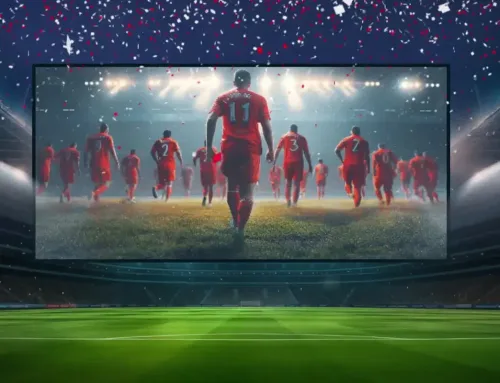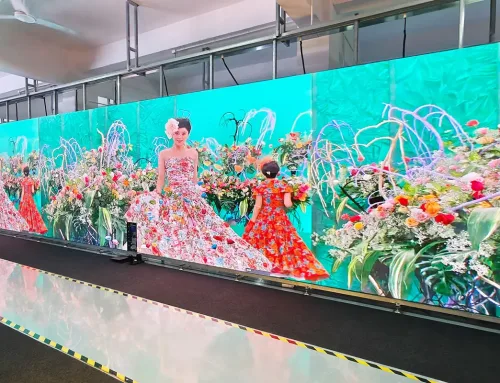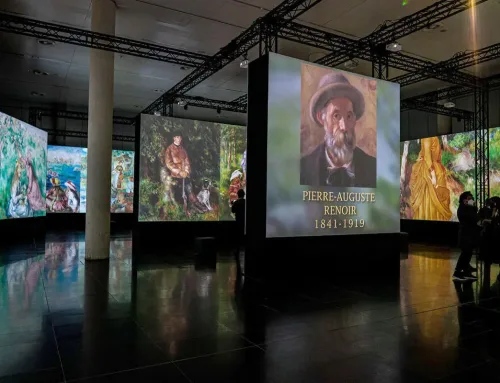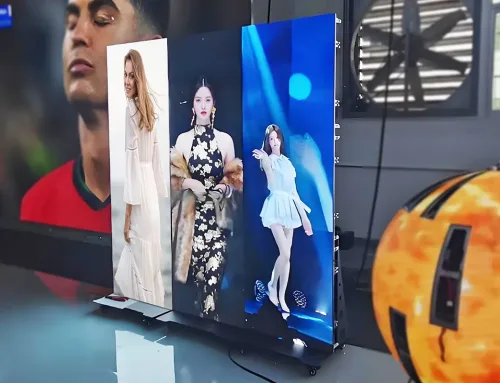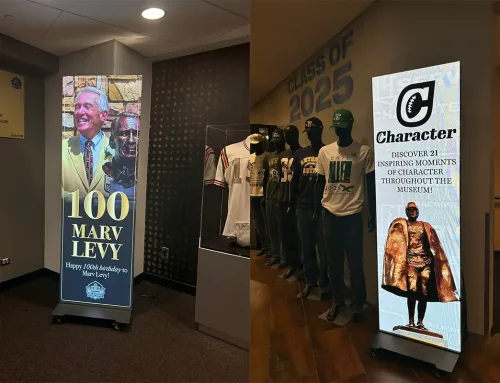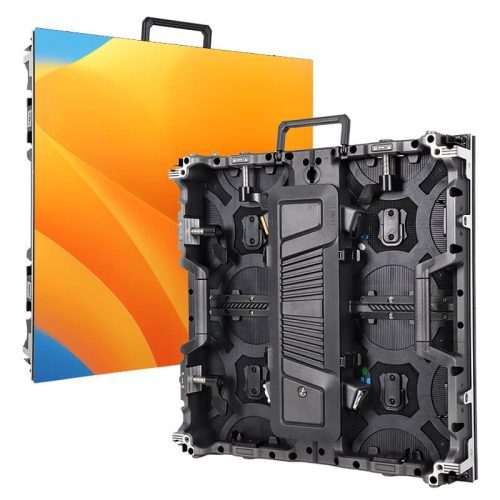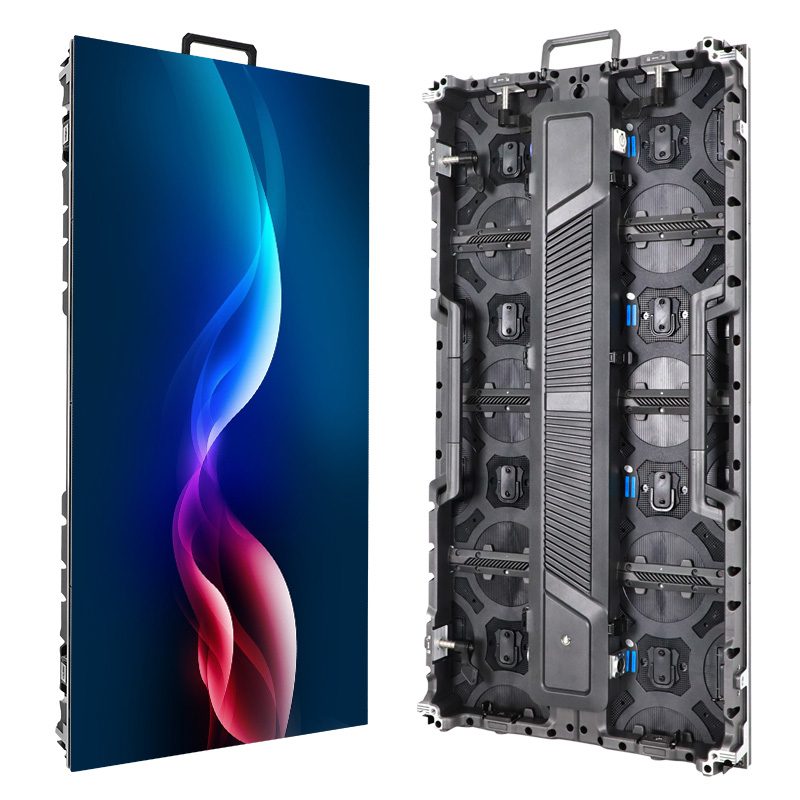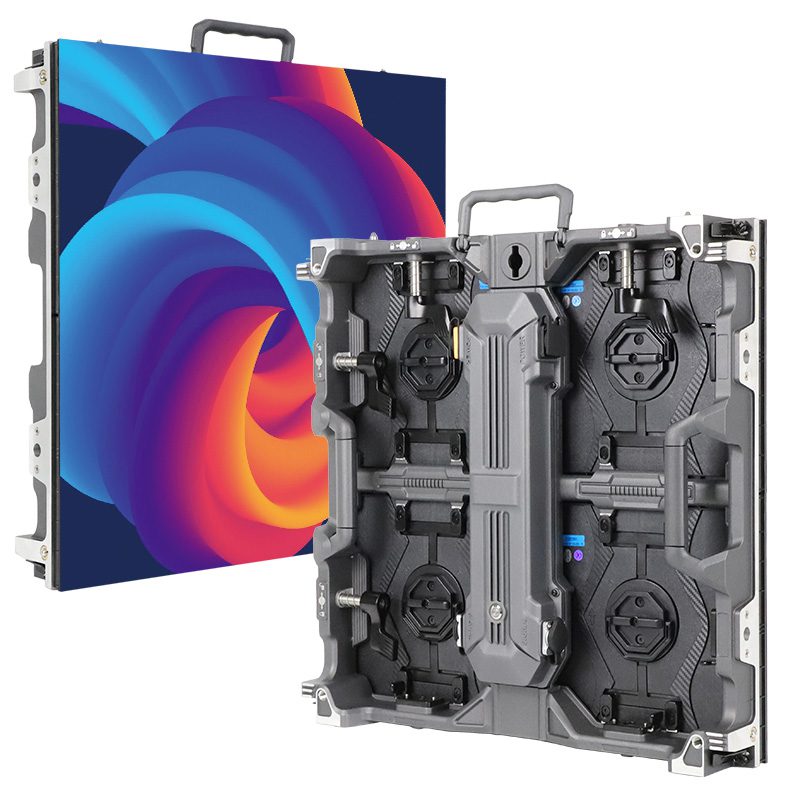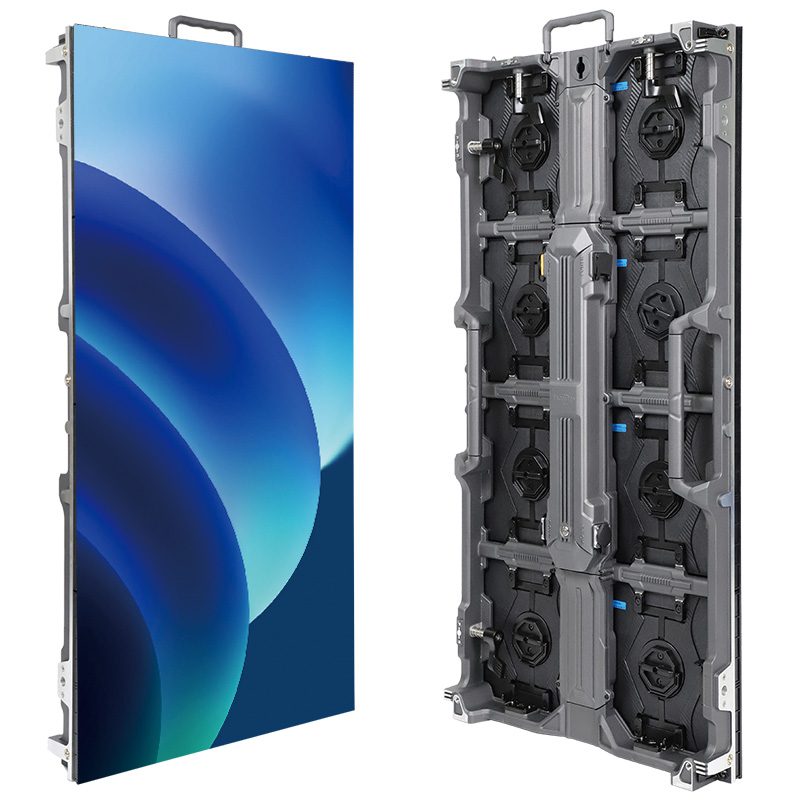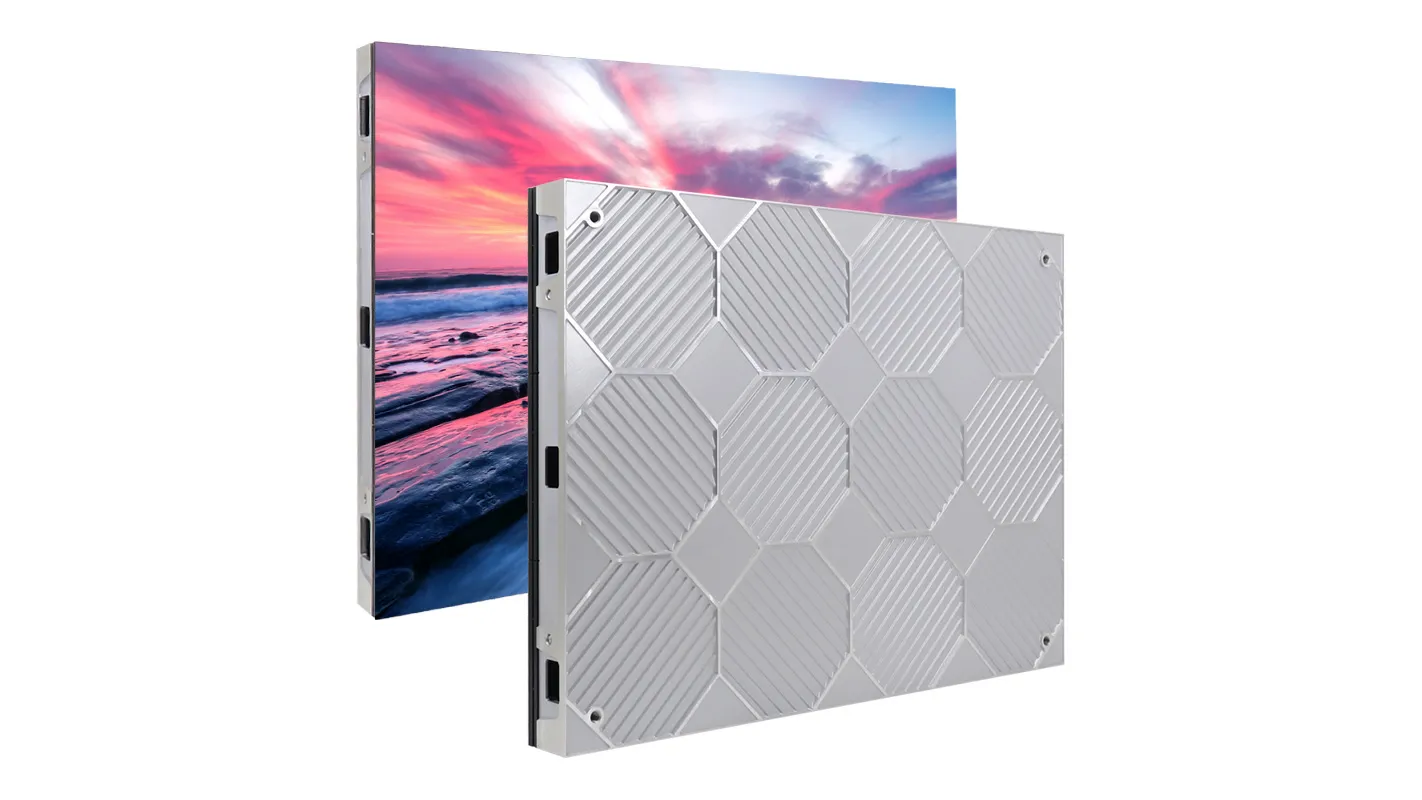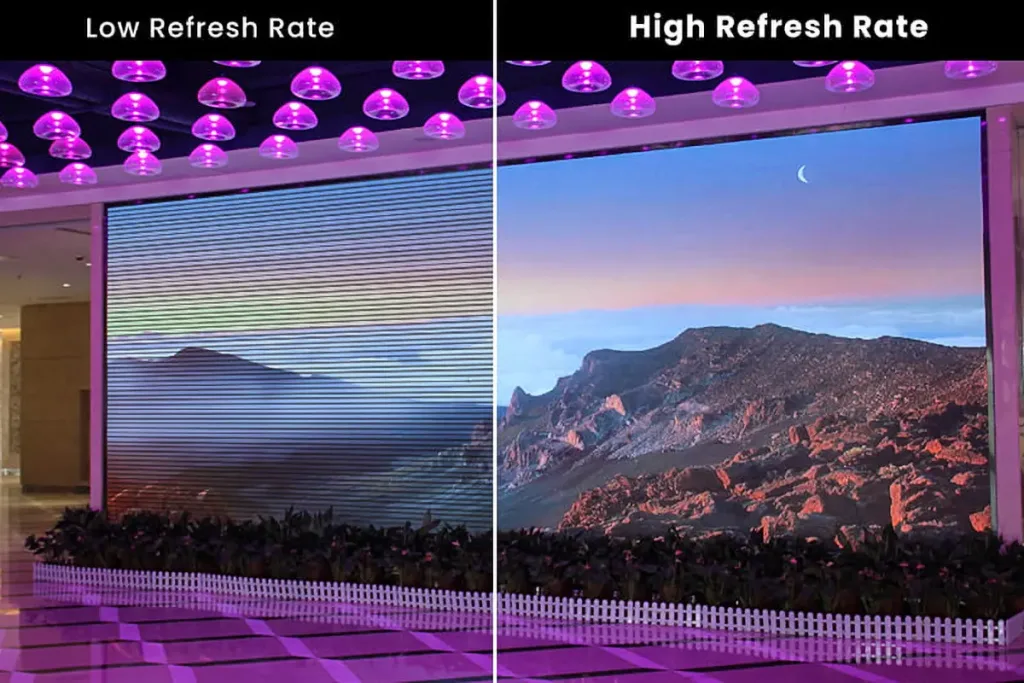Are you planning a big event but worried some people won’t be able to see the action clearly? A jumbotron screen is made exactly for that — a giant LED display that lets everyone, no matter how far they sit, catch live scenes, replays, and ads in full detail.
If you’re thinking about buying or renting one, prices usually start around $30,000, with rental options often between $5,000 and $20,000 per day, depending on size and setup.
Next is the article details.
catalogue
- 1. Экрани Ҷумботрон чист?
- 2. Ҷумботрон барои чӣ истифода мешавад?
- Экрани 3.Jumbotron против LED Видео Wall: Фарқият дар чист?
- 4.Дарунӣ против экрани Jumbotron берунӣ
- 5. Ҷумботрон чӣ қадар арзиш дорад?
- 5.2 Иҷораи Ҷумботрон чанд пул аст?
- 6. Чаро Ҷумботрон ин қадар гарон аст?
- 7. Чӣ тавр интихоб кардани экрани Jumbotron дуруст барои чорабинии худ?
- 8. Экрани Ҷумботронро аз куҷо харидан мумкин аст?
- 9. Саволҳо
- 10.Масъулият
1.What Is a Jumbotron Screen?
Jumbotron screen is a large LED display made for big events and public spaces.
It’s not just a regular screen — it’s a huge display that can be seen by thousands or even tens of thousands of people.
Initially, jumbotrons relied on CRT or projector technologies. But with the rise of LED displays, almost all jumbotron screens today use LED. That’s why it’s also known as an LED jumbotron.
1.1 What will Jumbotron Screen bring you?
At big events, people sitting far from the stage may miss the key moments — like a winning goal, a game-changing score, or the most powerful part of a live song.
But with a jumbotron screen, even the audience in the back can clearly see every important moment. It shows live video, slow-motion replay, and multi-angle shots. This helps improve the experience and makes your event more enjoyable for everyone.
More importantly, a jumbotron brings great value to sponsors. Ads and brand messages on the screen are shown to a large audience. This increases sponsor exposure and makes your event more attractive for future partnerships.
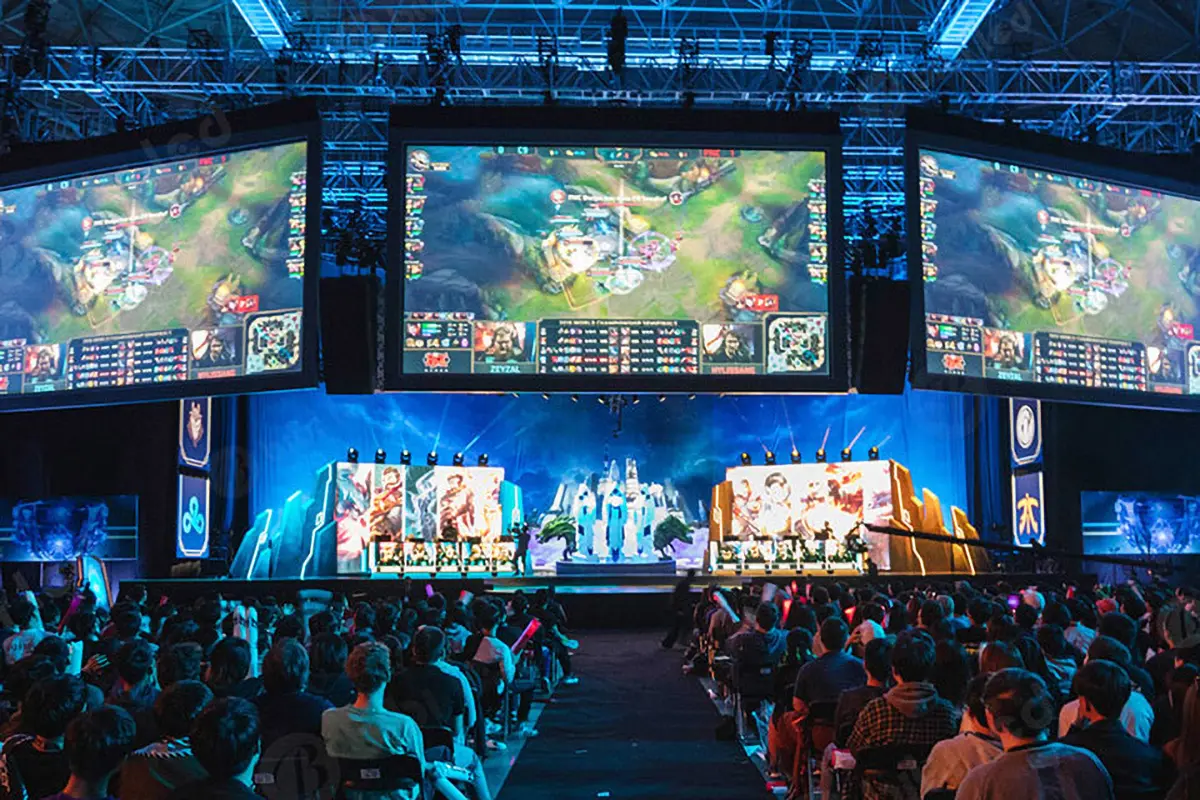
1.2 What are the characteristics of LED Jumbotron?
High brightness and clear image
A key advantage of an LED jumbotron is its high brightness and vibrant colors. It works well even in sunlight, so it’s perfect for outdoor use. People can easily see the screen, scores, or ads even from hundreds of meters away.
Modular design for easy setup and repair
This sizable LED display consists of numerous smaller modules. This makes it easy to transport and install. It can be quickly dismantled once the event concludes. If one panel has a problem, you only need to replace that part — it saves time and cost.
Strong IP65 protection
Outdoor concerts and sports events often face weather challenges. But the Outdoor Jumbotron screen usually supports IP65 protection, meaning it works well in rain, dust, or wind. Even in bad weather, your screen stays on — perfect for hosting a wild music night in the rain.
Wide viewing angle and long-distance visibility
Typically, a jumbotron offers a viewing angle of 140 degrees or wider.. This means people sitting at the sides or corners can still see the screen clearly. Everyone gets a good view, not just the people in the center.
2. What Is Jumbotron Used For?
Not every event needs a jumbotron screen. However, if your event involves a vast area, large audience, and high engagement, this type of screen could be essential to maximize impact.

2.1 Live Concerts and Music Festivals
The performance is on, the sound is booming, and the lights are flashing… but people in the back rows can only see a tiny figure on stage. Some might even shout, “Refund!” That’s when you may regret not having this kind of large LED display.
A bright and clear large LED display can zoom in on the stage and make every detail visible to the audience in the back.
At concerts or music festivals, the LED jumbotron isn’t just for better visibility. It also shows close-up shots, live lyrics, cool visual effects, and even interactive content or sponsor ads. The crowd can sing along, cheer, and take photos with the screen.
If you’re in charge of a live event with thousands of people, this screen might be even more worth the investment than the stage design.
2.2 Sports Stadiums and Arenas
Stadiums and arenas are the classic use case for jumbotrons. From live scores and slow-motion replays to player intros and fan cams, a giant LED display is now a standard part of the game experience. Most modern sports venues see it as a long-term investment in their infrastructure.
2.3 Corporate Events and Conferences
At company meetings, product launches, and award shows, the LED jumbotron can display your logo, promo videos, charts, and the CEO’s presentation. A big, dynamic, and high-definition giant LED screen shows your company’s modern image and tech strength.
2.4 Outdoor Advertising and Public Events
Super bright — that’s the biggest advantage for outdoor use! Even in direct sunlight, the high brightness of an LED screen keeps your ads clear and eye-catching from far away. Traditional billboards often lose visibility in daylight, but a jumbotron overcomes this limitation effectively.
Static billboards are easy to ignore. But an LED screen can show video ads with bright colors, vivid visuals, and even emotional stories. It can also include motion sensors to interact with people passing by.You can learn more about outdoor advertising screen solutions.
Need to change a promo? Event time updated? Emergency message? Traditional billboards need to be reprinted and replaced, which takes time and money. An LED screen can update content in seconds — just edit it on a computer. It’s fast, flexible, and efficient.
3.Jumbotron screen vs LED Video Wall: What’s the Difference?
Many people get confused when choosing between a jumbotron screen and an LED video wall. While both are part of LED display systems, they have clear differences in usage, size, viewing distance, and installation.
3.1 Are Jumbotron Screen and LED Video Wall the Same Thing?
A jumbotron usually refers to a super large LED display made for long-distance viewing. It’s often used in stadiums, concerts, and outdoor live events.
An LED video wall, on the other hand, is a broader term. It comes in a variety of sizes and shapes, making it well-suited for closer viewing environments such as meeting spaces, places of worship, product displays, or retail venues.
You can think of it this way:
Every LED jumbotron is an LED video wall, but not every LED video wall is a jumbotron.
| Category | Jumbotron Screen | LED Video Wall |
|---|---|---|
| Common Size | Extra-large, from tens to hundreds of square meters | Customizable, as small as a few square meters |
| Viewing Distance | Long distance (outdoor / large venues) | Medium to short distance (indoor / targeted areas) |
| Scenario | Stadiums, plazas, concerts, etc. | Conference rooms, churches, malls, booths, etc. |
| Content Use | Mainly for live broadcast, ads, camera feeds | Great for presentations, interaction, stage visuals |
| Mounting Style | Mostly fixed or hanging | Wall-mounted, embedded, rental, mobile, etc. |
| Budget | High cost, ideal for large-scale projects | Flexible setup, fits various budgets |
3.2 Which One Is Right for Your Event?
Choosing between a jumbotron screen and an LED video wall depends on the size of your event, the venue environment, and how far your audience will be from the screen.
If you’re planning a large outdoor event — such as a sports game, music festival, live outdoor broadcast, or public celebration — you’ll need a giant LED screen with high brightness and long-distance visibility. Something that lets thousands of people clearly see what’s happening. In this case, a jumbotron is the better choice.
But if your event is indoors — like a company meeting, product launch, trade show, church service, or theater — a custom-sized LED video wall will be more flexible and cost-effective. It can be built in any size or aspect ratio, mounted into walls, backgrounds, or mobile stands, and adapted to different spaces.
How to decide which one you need? Ask yourself:
- Is your audience 100 people or 10,000?
- How far are they from the screen?
- Will the screen be installed for a long time or just rented for a short period?
- Do you need to change content often or include interactive features?
If your event covers a large area, has a distant audience, and needs big visual impact — go with a jumbotron.
If you want flexible setup for different venues, and better value for money, then an LED video wall is the smarter option.
4.Indoor vs Outdoor Jumbotron Screen
Before buying a jumbotron screen, one key question is: Will you install it indoors or outdoors?
This decision affects the brightness you need, the level of protection, the structural design, and ultimately, the type of product you should choose.
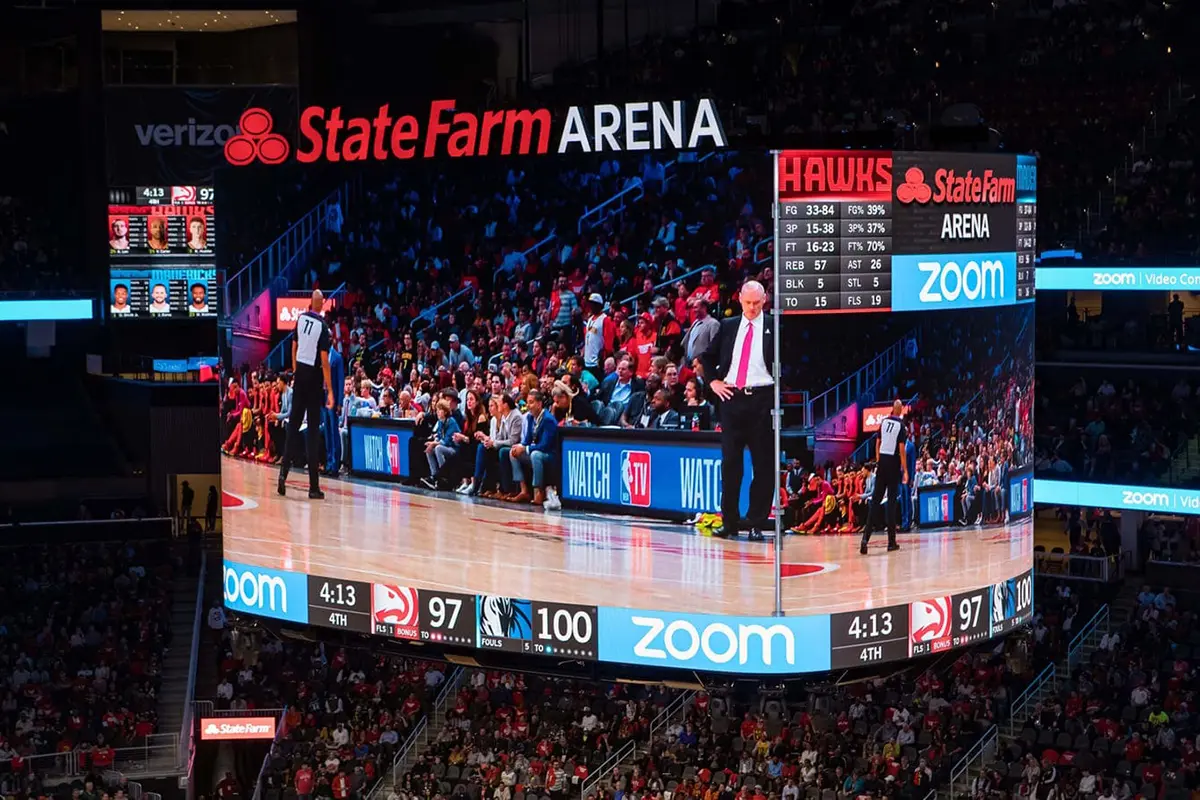
4.1 What Makes an Outdoor Jumbotron Different?
Outdoor environments are much tougher than indoor ones — direct sunlight, rain, wind, and heavy crowds all pose challenges. That’s why an outdoor jumbotron screen needs to be stronger in both structure and performance.
Compared to indoor models, outdoor jumbotrons usually need to reach 5000–7000 nits of brightness. Anything below 5000 nits may look washed out under sunlight and become hard to read.
They also have IP65 or higher waterproof and dustproof ratings, making them reliable in rain, sandstorms, and all kinds of weather. They’re built to run 24/7 in tough outdoor conditions.
In addition, outdoor jumbotrons are often larger, offer wider viewing angles, and support flexible mounting options like hanging, pole-mounted, or even vehicle-mounted.
If you’re looking for an outdoor jumbotron for sale, here are the key things to check:
- Is the brightness strong enough to fight sunlight?
- Can the protection level handle your local weather?
- Does the structure fit your venue’s setup?
These factors don’t just affect the screen’s lifespan — they directly impact your event’s visual quality.
4.2 When Do You Need an Indoor Jumbotron?
If your event is indoors, then an indoor jumbotron screen is the better choice.
Its main advantage is high resolution and finer image quality. With a smaller pixel pitch (typically P1.5 to P3.9), it delivers clear, smooth visuals even at close viewing distances. This type of screen works especially well in indoor settings like business events, trade shows, theaters, religious venues, and shopping areas.
Compared to outdoor screens, indoor models have softer brightness that’s easy on the eyes and more energy-efficient. However, for the same size, indoor screens can sometimes be slightly more expensive due to higher resolution.
When choosing an indoor jumbotron, consider:
- Does the pixel pitch match your viewing distance?
- Is the mounting method right for your space?
- Does the system support content switching or interactive features?
5.How Much Does a Jumbotron Cost?
Jumbotron price can be expensive or affordable — it depends on whether you buy or rent, and on factors like screen size, resolution, and where you plan to use it.
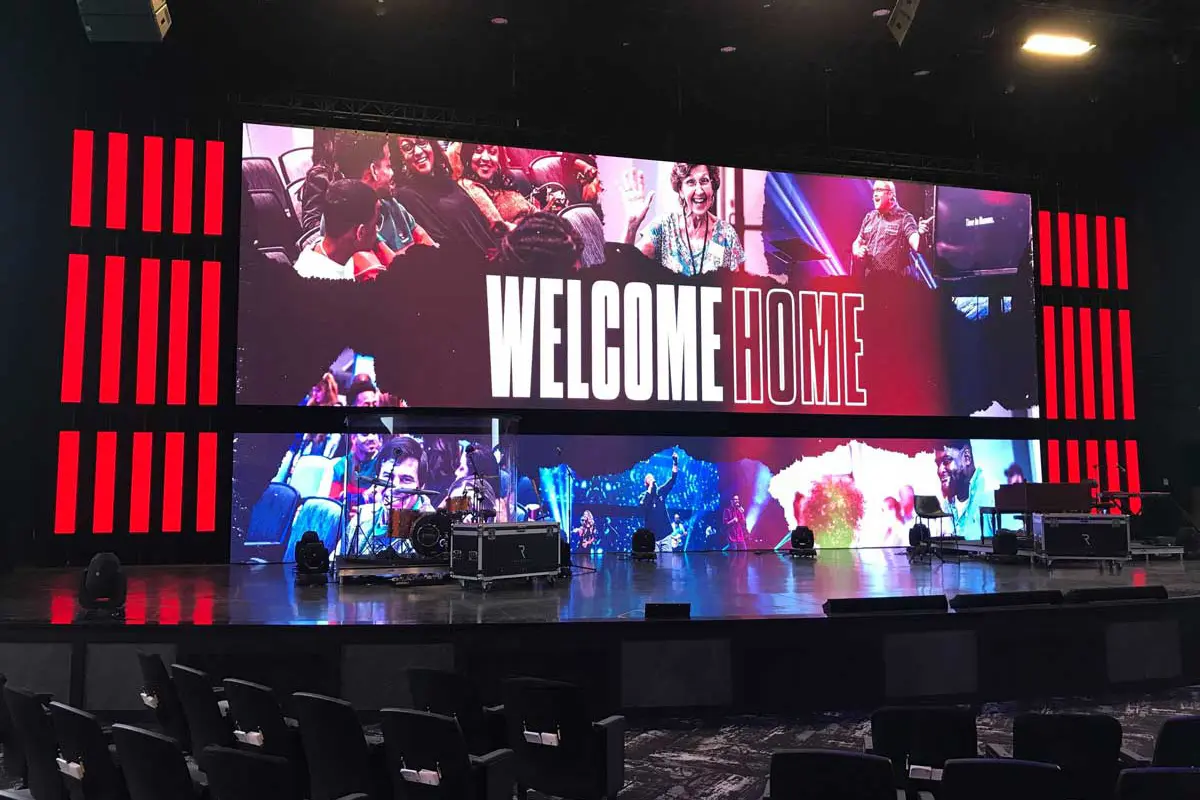
5.1 Buying a Jumbotron: What to Expect
The cost of buying a jumbotron can vary greatly depending on size, resolution, and installation conditions. According to SportsVenueCalculator:
- For a high school stadium: $30,000 – $500,000
- For a college stadium: $400,000 – $3,000,000
- For a professional arena: $1,000,000 – $10,000,000+
In real projects, the total a jumbotron price includes not just the display and control system, but also installation, mounting structures, wiring, setup, and maintenance — these extras can be 10%–20% of the total budget.
Here’s a general breakdown:
- Display screen: $30,000 – $1,000,000
- Additional components (processor, cables, frames): $25,000 – $550,000
- Installation & labor: $15,000 – $500,000
- Video content & management: $12,000 – $350,000
- Maintenance & tech support: $10,000 – $150,000
5.2 How Much Does It Cost to Rent a Jumbotron?
Renting a jumbotron is a popular choice for short-term events. It’s more flexible and you don’t need to worry about maintenance. Based on SportsVenueCalculator:
- Small to medium events: $1,500 – $3,000 per day
- Large events: $5,000 – $20,000+ per day
Rental prices usually include transport, setup, teardown, and technical support — so you don’t have to handle anything yourself.
5.3 Is There Any Cheap and Good Quality Jumbotron Screen?
Worried that a high-quality jumbotron must be expensive? Not necessarily. There are many reliable and reasonably priced options available.
For example, at EagerLED, we offer cost-effective LED jumbotron solutions:
- Outdoor LED screens: $169 – $1,608 per square meter
- Indoor LED screens: $163 – $1,466 per square meter
If you’re looking for an outdoor jumbotron, check out our EagerLED EA960F3 outdoor LED board, priced at $597 – $1,608 per square meter. It’s built to handle sunlight and bad weather, making it ideal for live shows, sports games, and outdoor promotions.
For indoor use, our EA640F2 indoor LED display screen is a great choice. Priced between $588 – $613 per square meter, it delivers sharp visuals — ideal for meeting rooms, corporate events, and exhibitions.
6. Why Are Jumbotron So Expensive?
Many people wonder why jumbotron price so much. The main reasons include their large size, complex display technology, high production and installation costs, and long-term maintenance and content management expenses.
6.1 What Drives the High Cost of a Jumbotron?
Here are the key factors that make jumbotron expensive:
Screen size: Bigger screens mean more LED parts and materials, so the price goes up accordingly.
Display technology: Features like high brightness, high refresh rate, and high resolution (HD, 4K) increase manufacturing complexity and price.
Protection level: Outdoor jumbotrons need to resist water, dust, sun, and wind — requiring stronger designs and more durable materials.
Manufacturing process: Modular design, precision soldering, and strict quality control add to production costs but ensure long-term stability.
Shipping & installation: Large screens are expensive to transport and require skilled workers and equipment to install — especially for outdoor use.
Maintenance & support: Long-term costs include upkeep, spare parts, and technical service.
Content production & control system: Creating HD video content and managing playback systems also adds extra costs.
6.2 Are There Ways to Save Money Without Sacrificing Quality?
A jumbotron may cost tens of thousands of dollars, but with smart planning, you can reduce spending without hurting the viewing experience.
Choose the right pixel pitch
Pixel pitch affects both image clarity and viewing distance.
Indoor screens: For close viewing (3–10 meters), go with P2.5 – P4. These offer sharp visuals at reasonable prices.
Outdoor screens: For farther viewing, P6 – P10 models are more budget-friendly and still bright enough.
Avoid chasing ultra-fine pitch (like P1.5 or below) unless you really need it — the price jumps a lot, but the difference in real use may be minor.
Don’t overspend on brightness
- Indoor screens: 800–1,200 nits is usually enough.
- Outdoor screens: 5,000–6,500 nits is ideal for daylight visibility.
- Some screens offer 7,000+ nits, but for most projects, that’s overkill and a waste of budget.
Pick the right protection level (IP rating)
Outdoor jumbotron: Choose at least IP65 for full protection.
Indoor screen: No need for high waterproofing — lower IP ratings are fine and cost less.
Look for quality, not just brand names
Big international brands are great, but often overpriced. Many Chinese brands, like EagerLED, offer high performance at better value — ideal for small to medium projects or first-time buyers.
Renting vs Buying: Consider short-term needs
If you’re hosting a one-time music festival, trade show, or seasonal event, renting a jumbotron (usually $5,000–$45,000/day) can save big. Rentals include transport, setup, and tech support — with more flexibility and lower risk.
7. How to Choose the Right Jumbotron Screen for Your Event?
Choosing the right jumbotron screen isn’t just about budget — it also depends on your venue, content type, and audience experience. These key points can help you pick the best screen for your needs.
7.1 Choose Size and Brightness Based on Venue Type
Outdoor venues need high brightness (over 5000 nits) and a high protection rating (like IP65) for weather resistance.
Indoor venues focus on resolution and contrast — usually a small pixel pitch (P2.5 or lower) gives better detail.
For large open spaces, use a large LED display over 100 inches for better visibility.
7.2 Match Resolution and Refresh Rate to Your Content
If you’re showing fast-moving videos or doing a live broadcast, you’ll need:
High refresh rate (1920Hz or higher) — prevents screen tearing and looks smooth on camera.
High resolution (such as 1080p or above) — provides clearer visuals and enhances your brand image.
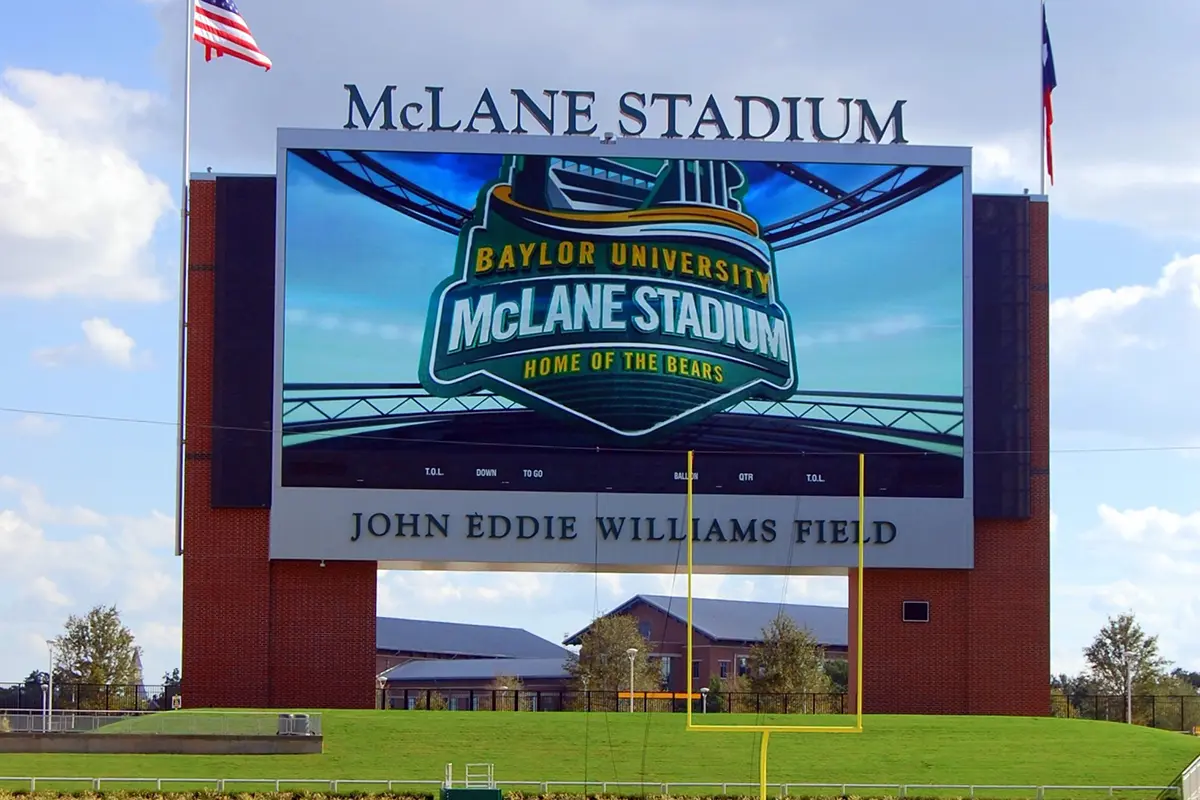
7.3 Plan Your Budget Smartly
Working with a tight budget but still want great results? Consider these options:
Use modular panels so you can expand the screen in the future.
Rent a custom jumbotron screen for temporary events.
Look for cost-effective niche suppliers that offer ODM or direct sales — they can provide custom solutions at better prices.
8. Where to Buy a Jumbotron Screen?
When you’re planning to buy a jumbotron screen, the real question isn’t just where to buy — it’s where to find a reliable, cost-effective supplier with professional service. After all, this isn’t something you can simply add to your cart. It involves selecting the right model, shipping, installation, setup, and long-term support.
8.1 Why Choose Jumbotron Manufacturers Instead of Resellers or Marketplaces?
Many people turn to Amazon or Alibaba for their first search. But for a large, high-value product like a jumbotron, that route comes with risks:
- It’s hard to tell if the supplier is a real manufacturer or just a reseller.
- Most listings use “universal specs” that might not match your venue needs.
- No customization — and future upgrades or maintenance may become a headache.
- You’ll likely have to handle shipping, taxes, and technical setup by yourself.
In contrast, working directly with jumbotron manufacturers solves 90% of these issues. A real factory typically offers:
- Custom solutions: Based on your venue size, viewing distance, and content type, they’ll recommend the right pixel pitch, brightness, and protection level.
- Pre-assembled modules: For easier shipping and faster on-site installation.
- Remote setup support: Even if you’re overseas, manufacturers can guide your team through installation and operation.
- Stable production & quality control: Serious LED display manufacturers always run full aging tests and panel-by-panel calibration before shipping.
8.2 Does “Made in China” Mean Cheap and Low Quality?
Today, many LED display manufacturers from China are global leaders — brands like Unilumin, Absen, and Liantronics are well-known worldwide.
However, for small to mid-sized projects, these big brands may go beyond your budget. That’s where specialized suppliers like EagerLED display manufacturers offer better value.
Their strengths include:
- Reliable, standardized product lines — not luxury models, but proven, stable designs.
- Lower production costs — same specs at more competitive prices.
- Professional export experience — skilled sales reps who understand global clients and smooth out communication issues.
9.FAQs
10.Conclusion
The cost of a jumbotron screen can vary widely depending on its size, resolution, and application. If you’re planning to buy or rent a high-value, cost-effective screen, it’s important to plan ahead and consider the key factors we discussed in this guide — including venue type, viewing distance, content needs, and budget.
Most importantly, choose a trusted and experienced supplier who can provide the right solution and reliable support.
If you’d like help finding the right LED jumbotron for your event, feel free to contact us anytime.



